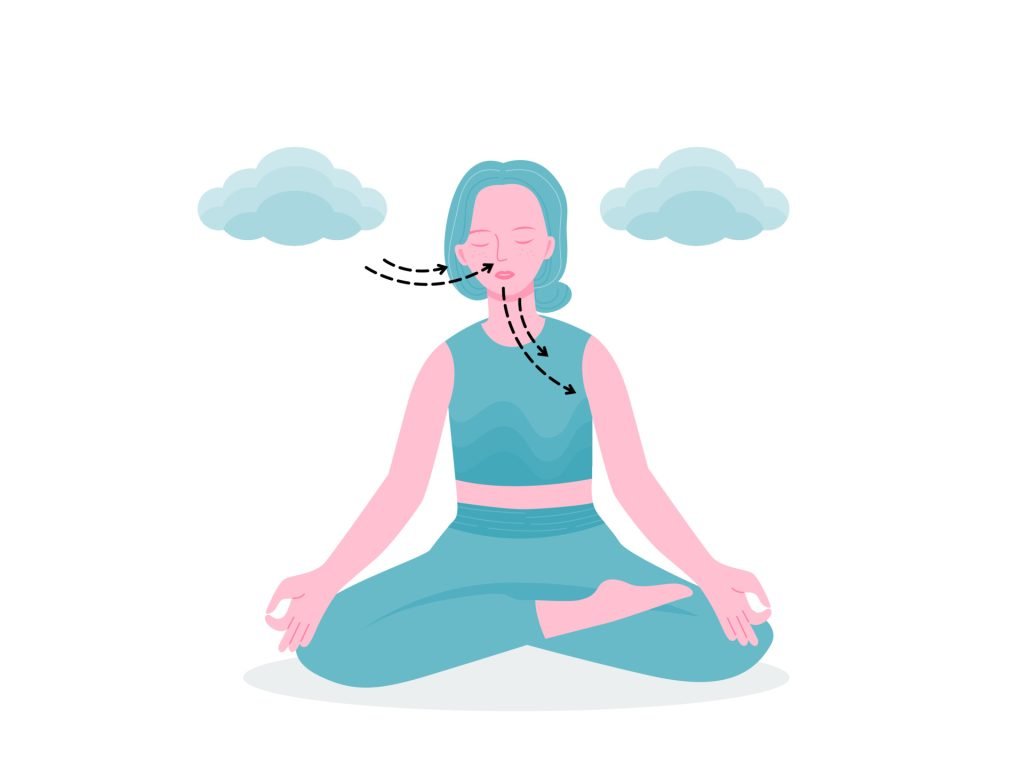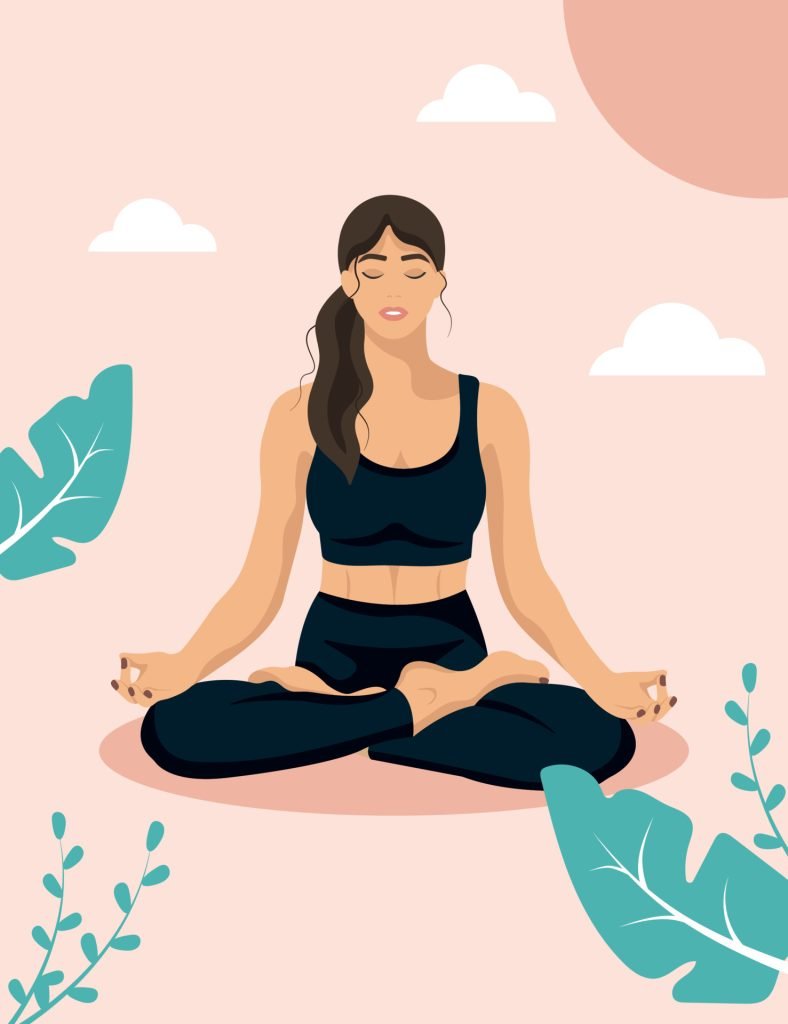Introduction:
Breathing exercises are a long-established custom. It has been practiced for thousands of years by yogis, martial artists, and several other cultures to enhance concentration, equilibrium, relaxation, and overall wellness. We now have access to tools like webpages and apps that may help break down precisely how to practice different breathing exercises thanks to the arrival of contemporary technology into our life. This blog post will examine the true goal of these breathing exercises. We’ll look at how this tool provides detailed instructions on carrying out basic and more complex approaches so you can select the ideal one for your particular needs and objectives.
Overview of Breathing Exercises

Techniques for increasing awareness and control of one’s breathing patterns include breathing exercises. Breathing exercises for kids are typically an unconscious biological function that occurs automatically. However, it has been shown that we may cause the mind and body to relax by learning to breathe deliberately in particular ways. These movements are a cornerstone of numerous disciplines, including yoga, meditation, and mindfulness. In therapeutic settings, they are also employed to manage the symptoms of stress, anxiety, and depression. For example, people can use breathing exercises to improve their physical and emotional well-being by strengthening their connection to their breath.
The Advantages of Breathwork Exercise

For thousands of years, people have embraced the potent, age-old practice of breathwork to enhance their general well-being. It has been demonstrated that doing breathwork can lower blood pressure and stress, and anxiety levels. This method focuses on controlled breathing, assisting the user in taking long, calm breaths that promote the body’s optimal oxygenation. Breathwork can help with mental clarity, increase focus, and provide a stronger sense of inner calm, in addition to helping with physical health. The ability to control and manage breathing can significantly improve your health and well-being. The advantages of using breathwork are apparent, whether you’re a seasoned practitioner or are just getting started.
Techniques for Breathing Exercises

Exercises that focus on breathing have the ability to improve athletic performance as well as reduce worry and tension. But with so many alternatives available, it could be difficult to know where to start. Fortunately, we have compiled a list of authorized breathing exercise methods to simplify things. Deep breathing, belly breathing, box breathing, and alternating nostril breathing are some of these methods. Each technique is beneficial in its particular way and is portable, making it a wonderful supplement to any self-care or wellness program. Thus, there is a technique on this list for you, whether your goal is to relieve tension, boost attention, or improve your breathing habits.
How to Apply Breathwork in Everyday Activities?
Breathwork has become popular among many people looking to enhance their general well-being. Numerous advantages come from using breathwork in your everyday routine, such as lowered stress, increased attention, and improved emotional control. However, how precisely can you juggle this practice with your already busy daily life? One strategy is to begin by practicing basic breathing techniques for a few minutes daily, such as deep belly breathing or alternate nostril breathing. You can also experiment with introducing breathwork into your daily routines, such as before bed or during your morning commute. You can benefit from this potent exercise’s benefits and enhance your general health and well-being by including breathwork in your daily routine.
Advice for Getting the Most from Breathwork Exercises
Breathwork techniques can positively affect the body and mind, but it can be challenging to get the most from them. Finding a calm, cozy setting where you can fully concentrate on your breathwork exercises is crucial. Setting an intention for your practice can also keep you motivated and focused. Another beneficial idea is starting with shorter sessions and progressively extending them as you get more accustomed to your routine. Always remember to breathe fully and repeatedly, concentrating on how it feels for the air to enter and exit your body. Finally, when you start your breathwork adventure, remember to be patient and nice to yourself. You’ll be able to fully appreciate and profit from breathwork techniques if you keep these suggestions in mind.
Conclusion
Finding inner peace, a connection to the natural world, improved stress management, and even a decrease in physical discomfort are all benefits of practicing it. In addition, we enjoy various uses in our general health by taking a moment out of our daily routine to do the breathing exercises, such as the four-seven-eight breath and sympathetic resonance, meditation, and yoga nidra. Even while the full rewards need consistent practice, any mental clarity attained through breathwork is rewarding regardless of how long it takes. Discovering the beauty within us is sufficient motivation to test out this powerful method recommended by the experts for ourselves!
Frequently Asked Questions (FAQs)
1. What do breathing techniques entail?
Exercises that require conscious control and manipulation of the breath are known as breathing methods. They put a lot of emphasis on controlling and deepening the breath to accomplish numerous physical, mental, and emotional benefits.
2. What do breathing exercises accomplish?
Breathing exercises for kids have several goals. First, they are designed to help general well-being by promoting relaxation, lowering stress and anxiety, enhancing mental focus and clarity, increasing oxygen intake, enhancing physical performance, and balancing emotions.
3. How can breathing exercises help you unwind?
In therapeutic settings, they are also employed to manage the symptoms of stress, anxiety, and depression. For example, people can use breathing exercises to improve their physical and emotional well-being by strengthening their connection to their breath.
4. Can breathing techniques help with stress and anxiety reduction?
Yes, breathing exercises can help you feel less stressed and anxious. You can stop the body’s stress response and start the relaxation response by actively managing your breathing. Deep, controlled breathing promotes calm and tranquility by regulating the nervous system.
5. How do breathing exercises enhance concentration and clarity of thought?
Exercises that improve breathing, including deep belly or alternating nostril breathing, increase the amount of oxygen reaching the brain. This promotes mental clarity and attention as well as concentration and brain function. It may be beneficial when performing cognitively demanding tasks or feeling mentally exhausted.
For further articles and more informative blogs, visit our site FuseBay.








